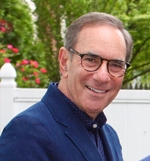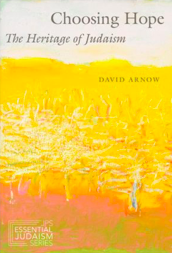By Michael R. Mantell, Ph.D.

SAN DIEGO — In less than one second, searching for the word “hope” brings almost 2.5 billion references through Google. Wow! That’s a popular topic, and for good reason. I’ve long seen the meaning of the word “H.O.P.E.” as referencing “hold on, pain ends.” It’s far more than that.
Hope, according to positive psychologists, reflects our thoughts that we can find a way to reach and achieve our goals in life and feel motivated to take action to do so. Hope, in other words, drives our emotions and our actions, and promotes our wellbeing. It is, to use more clinical terminology, a future orientated motivational process.
This is what prompted me to eagerly dive into a remarkably well-reasoned, and seriously uplifting, erudite “feast of Jewish wisdom” as Letty Cottin Porgrebin, author of Deborah, Golda and Me: Being Jewish in America, described Choosing Hope: The Heritage of Judaism.

Publishers Weekly describes this wellspring of positivity as “unearthing the hopefulness baked into Judaism.”
To begin, David Arnow, the author, understands hope aligned with contemporary psychology as “reflecting our embrace of the possibility of a particular, deeply desired future, and hope fuels our actions to bring it about.” Arnow is a former clinical psychologist who earned his doctorate at Boston University and is scholar of the festival of Passover. He is the author of Creating Lively Passover Seders and coeditor of My People’s Passover Haggadah.
In this all-embracing examination of hope through the lens of Judaism (including extensive references to Jewish and secular sources), we learn of nine sources of hope in our tradition from biblical to contemporary times. These 9 chapters include:
- Teshuvah/Repentance—the method to fulfill our hope to become better human beings and the gateway to hope.
- Tikkun Olam—the hope that we can repair the world by working together and turning hope into action.
- Abraham and Sarah—models of persisting and living in hope amid trials.
- Exodus—the archetype of redemptive hope and hope at the heart.
- Covenant—the hope for a durable relationship with the One of Being.
- Job—the “hard-fought hope” that brings a grief-stricken man back to life with vindication.
- World-to-Come/Jewish Eschatology—the sustaining hope that death is not the end and hope for the world to come.
- Israel—high hope activists work to build a just and inclusive society for all Israelis and hope for our homeland.
- Jewish Humor/the Currency of Hope — “hope’s last weapon” in our darkest days.
At a time when we are about to celebrate our freedom, the Exodus, in a world filled with despair, war, crime, and other adversity, this book can be a powerful and impactful aid in affirming our hope and transmitting it to the next generation, suffering more than in any recent time in our history.
The author engagingly points to teshuvah as a promise that we can change coupled with tikkun olam providing us the motivation to do so, changing ourselves and our world for the better. He is clearly anchored in contemporary Jewish theology with its rich reservoir of hope, that places responsibility to creating the better world we dream of in our hands, partnering with Hashem, who works through us. In Arnow’s words, “the future we hope for is waiting for us to create it.”
I’m particularly impressed by the author’s commitment to transmitting our heritage of hope to the next generation. “Maybe when you hear someone say that antisemitism or racism will always be with us or that Israel and the Palestinians will never make peace, you’ll say ‘Really?’” He tells us that “when we share the narrative of the Jewish people and interpret them through the lens of hope, we spread hope.” How beautifully uplifting.
The timeliness of my completing this read and review, just days before Passover, is certainly not a coincidence. Arnow suggests that at our Seders we “lead a discussion about what hope means to us and highlight examples from the Haggadah that illustrate hope or hopelessness, or how the Exodus inspired hope in people across ages, or who should take responsibility for fulfilling our hopes in the world today.”
As Arnow says, Kaveh, kaveh, v’nitkaveh, “Hope, hope, and we will build one another’s hope.”
*
Michael R. Mantell, Ph.D., prepares a weekly D’var Torah for Young Israel of San Diego, where he and his family are members. They are also active members of Congregation Adat Yeshurun. He may be contacted via michael.mantell@sdjewishworld.com